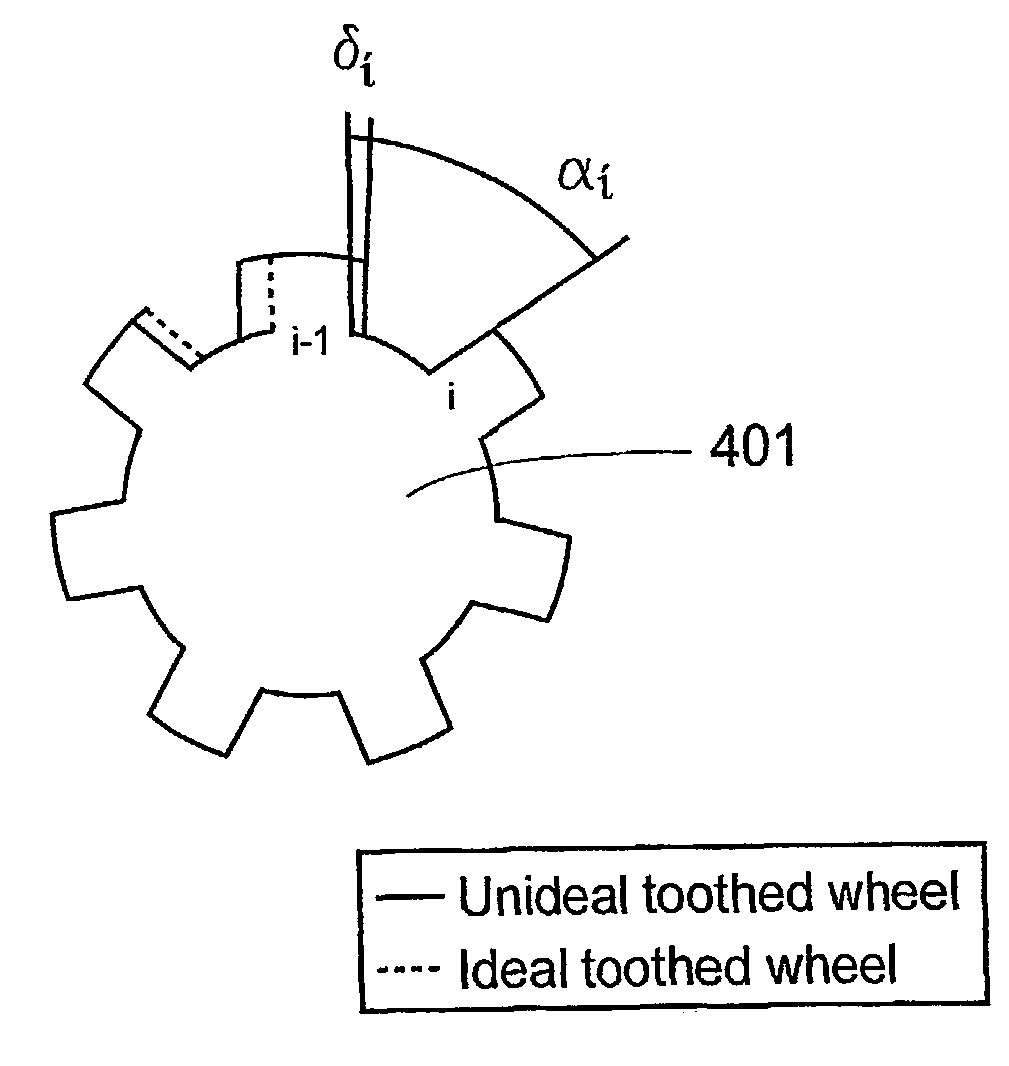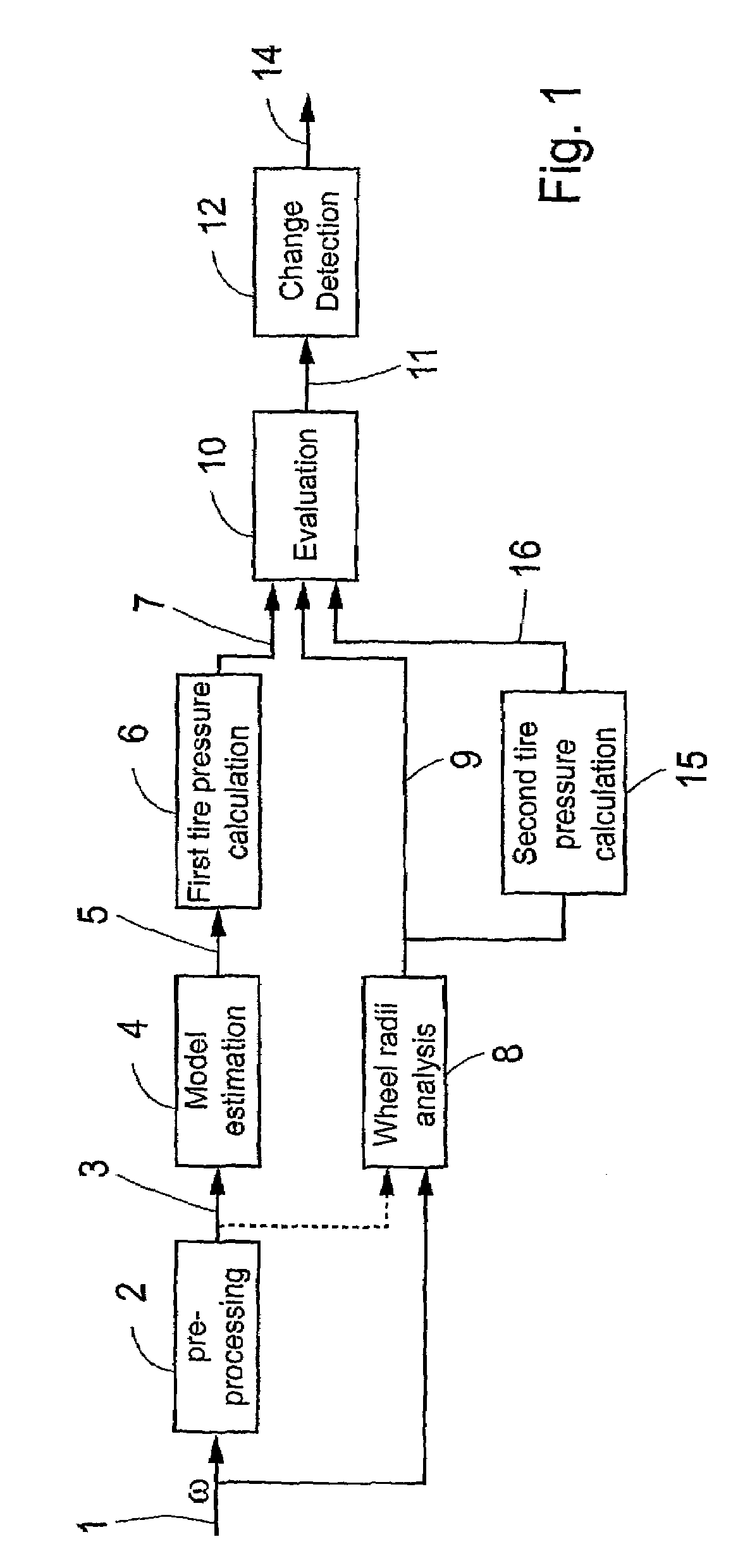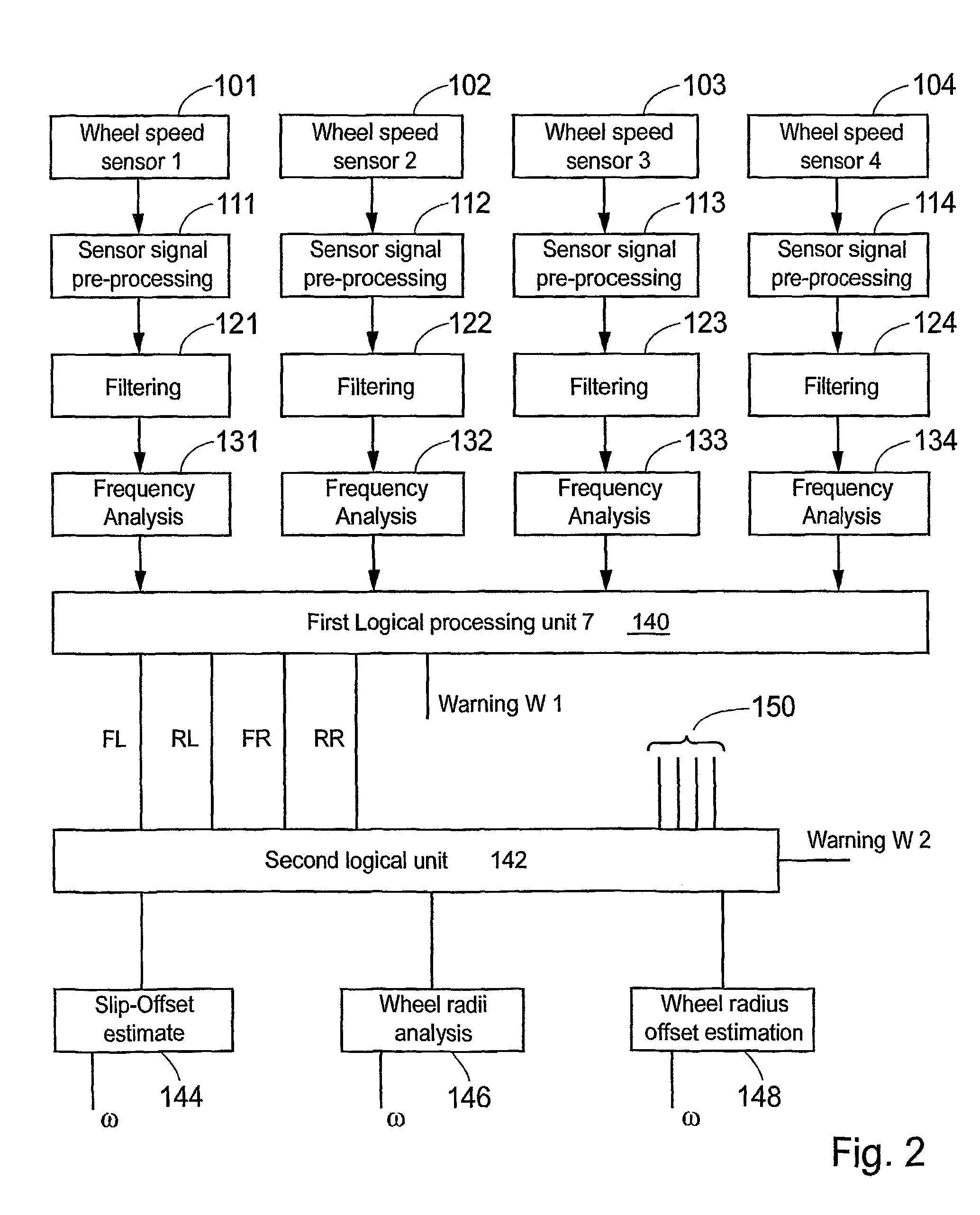Tire pressure estimation
a tire pressure and tire technology, applied in the direction of tyre parts, braking systems, tyre measurements, etc., can solve the problems of affecting the wheel radius, requiring comparatively expensive equipment integrated with the tire, and involuntary stopping in connection with a change of wheels,
- Summary
- Abstract
- Description
- Claims
- Application Information
AI Technical Summary
Benefits of technology
Problems solved by technology
Method used
Image
Examples
Embodiment Construction
General Setting
[0062]The invention comprises a method and a realisation of the method that may be realised in hardware, software or a combination thereof. The most feasible realisation of the invention is likely to be in the shape of a computer program product preferably comprising a data carrier provided with program code or other means devised to control or direct a data processing apparatus to perform the method steps and functions in accordance with the description. A data processing apparatus running the inventive method typically includes a central processing unit, data storage means and an I / O-interface for signals or parameter values. The invention may also be realised as specifically designed hardware and software in an apparatus or a system comprising mechanisms and functional stages or other means carrying out the method steps and functions in accordance with the description. In practice, the invention will typically be implemented in a digital or analogue sensor control ...
PUM
| Property | Measurement | Unit |
|---|---|---|
| frequency | aaaaa | aaaaa |
| velocity | aaaaa | aaaaa |
| frequency analysis | aaaaa | aaaaa |
Abstract
Description
Claims
Application Information
 Login to View More
Login to View More - R&D
- Intellectual Property
- Life Sciences
- Materials
- Tech Scout
- Unparalleled Data Quality
- Higher Quality Content
- 60% Fewer Hallucinations
Browse by: Latest US Patents, China's latest patents, Technical Efficacy Thesaurus, Application Domain, Technology Topic, Popular Technical Reports.
© 2025 PatSnap. All rights reserved.Legal|Privacy policy|Modern Slavery Act Transparency Statement|Sitemap|About US| Contact US: help@patsnap.com



